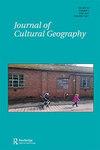钻石道佛教中女性的日常精神:一项汽车摄影研究
IF 0.7
Q3 GEOGRAPHY
引用次数: 6
摘要
摘要西方世界正经历着越来越受欢迎的新宗教运动,其信徒倾向于精神,一种主观的、个人的宗教形式。这些精神形式塑造了日常生活的空间,它们的意义、感知和体验,这开始反映在新的宗教地理中。在捷克,发展最快的新宗教运动之一是钻石道佛教。这篇文章关注的是钻石之路精神是如何在太空中生活和体验的。本文运用汽车摄影的方法探讨了这一现象。我们请六位女性拍摄她们日常生活中重要的地方,并解读她们的精神意义。这种方法可以在厨房、公交车或自然场所等被感知和体验的日常空间中探索女性的精神。研究结果表明,女性在看似世俗的空间中体验佛教有一种特殊的方式,她们通过超越的女性特征来描述这种方式。日常空间通过主体对佛教的情感和持续体验而成为精神空间,而佛教中心的官方神圣空间则融入了女性的日常生活活动中。因此,学者们经常描述的神圣和世俗空间之间的划分受到了挑战。本文章由计算机程序翻译,如有差异,请以英文原文为准。
Women’s everyday spirituality in Diamond Way Buddhism: an auto-photographic study
ABSTRACT The Western world is experiencing increasing popularity of new religious movements whose adherents tend to spirituality, a subjective, personal form of religion. These spiritual forms shape the spaces of everyday life, their meanings, perceptions, and experiences, which is starting to be reflected in new geographies of religion. In Czechia, one of the most rapidly growing new religious movements is Diamond Way Buddhism. This contribution focuses on how Diamond Way spirituality is lived and experienced in space. The paper explores this phenomenon using the method of auto-photography. We asked six women to photograph places important to them in their daily lives and interpret their spiritual meaning. This method allows exploration of women’s spirituality in the everyday spaces where it is perceived and experienced, such as kitchens, buses, or natural sites. The results show that women have a specific way of experiencing Buddhism in seemingly secular space which they describe through feminine characteristics of transcendence. Everyday spaces become spiritual through the subjects’ emotional and continual experiencing of Buddhism, while the officially sacred space of a Buddhist center is incorporated into everyday life activities of women. The division between sacred and secular spaces often described by scholars is therefore challenged.
求助全文
通过发布文献求助,成功后即可免费获取论文全文。
去求助
来源期刊

Journal of Cultural Geography
GEOGRAPHY-
CiteScore
1.70
自引率
22.20%
发文量
15
期刊介绍:
Since 1979 this lively journal has provided an international forum for scholarly research devoted to the spatial aspects of human groups, their activities, associated landscapes, and other cultural phenomena. The journal features high quality articles that are written in an accessible style. With a suite of full-length research articles, interpretive essays, special thematic issues devoted to major topics of interest, and book reviews, the Journal of Cultural Geography remains an indispensable resource both within and beyond the academic community. The journal"s audience includes the well-read general public and specialists from geography, ethnic studies, history, historic preservation.
 求助内容:
求助内容: 应助结果提醒方式:
应助结果提醒方式:


